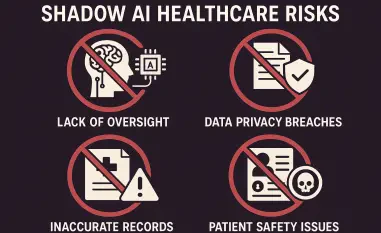In a world where digital transactions form the backbone of business, a staggering reality emerges: a single flaw in a widely used tool can jeopardize millions of sensitive records in an instant, threatening security and trust. Picture a major corporation processing customer data through sleek, efficient online forms, unaware that a silent vulnerability lurks beneath the surface, ready to grant attackers full control. This is not a hypothetical scenario but a pressing issue with Adobe Experience Manager (AEM) Forms, a platform trusted by countless organizations. A critical security flaw, actively exploited as of this year, 2025, has raised alarms across the cybersecurity landscape, demanding urgent attention.
The Core of the Crisis: Why This Vulnerability Matters
This is no minor glitch. Identified as CVE-2025-54253, the vulnerability in AEM Forms carries a perfect CVSS score of 10.0, signaling its catastrophic potential. It’s a misconfiguration issue that allows remote code execution, meaning hackers can infiltrate systems without physical access. The US Cybersecurity and Infrastructure Security Agency (CISA) has flagged this flaw as actively exploited, adding it to its Known Exploited Vulnerabilities (KEV) catalog. For businesses and government agencies alike, the stakes couldn’t be higher—sensitive data, operational integrity, and public trust hang in the balance.
Beyond the immediate threat, this issue reflects a broader challenge in cybersecurity. AEM Forms powers digital workflows for everything from customer onboarding to internal documentation, making it a prime target for malicious actors. With a publicly available proof-of-concept (PoC) exploit circulating, even less-skilled attackers can weaponize this flaw. CISA’s warning underscores the urgency, especially as federal agencies face a strict three-week deadline to patch systems under Binding Operational Directive (BOD) 22-01.
Dissecting the Flaw: How Attackers Exploit the Gap
At the heart of this vulnerability lies a deadly combination of authentication bypass and a misstep in configuration. Specifically, CVE-2025-54253 exploits the activation of Struts development mode in the admin interface, enabling attackers to craft malicious payloads using Object-Graph Navigation Language (OGNL) expressions. The result? Full remote code execution, granting unauthorized access to entire systems with devastating ease. A related flaw, CVE-2025-54254, scored at 8.6 on the CVSS scale, compounds the danger by allowing improper XML handling to expose file systems.
The implications are chilling for any organization relying on digital forms. Once inside, attackers can steal data, disrupt operations, or plant malware for future havoc. While exact details of real-world attacks remain undisclosed, CISA’s confirmation of active exploitation paints a grim picture. Industries handling personal information, such as finance or healthcare, face amplified risks, as a single breach could trigger regulatory penalties and erode customer confidence.
Voices of Concern: Experts Weigh In on the Threat
Cybersecurity researchers who uncovered this flaw have issued stark warnings about its severity. Shubham Shah and Adam Kues from Searchlight Cyber, the first to identify CVE-2025-54253, highlighted how the public PoC exploit drastically lowers the entry barrier for attackers. Their findings emphasize that this isn’t a theoretical risk but a clear and present danger. “When exploits are out there for anyone to use, the clock starts ticking immediately,” noted Shah in a recent statement, urging swift action.
CISA has echoed this urgency with a pointed advisory. A spokesperson from the agency stressed, “Every minute of delay increases exposure—organizations must act now to avoid severe fallout.” This sentiment resonates across the cybersecurity community, especially as Adobe patched over 35 other vulnerabilities in its product suite this week alone. The pattern of flaws in widely used software reveals a troubling reality: digital tools, while indispensable, often come with hidden weaknesses that attackers are quick to exploit.
The Bigger Picture: A Trend of Rising Cyber Risks
This vulnerability is not an isolated incident but part of a growing wave of threats targeting essential software. Adobe’s recent batch of patches, including a critical fix for its Connect collaboration suite, signals an ongoing struggle to secure complex platforms. As businesses increasingly digitize operations, the attack surface expands, offering more entry points for cybercriminals. Statistics from recent cybersecurity reports show a 30% rise in exploits targeting enterprise software in 2025 alone, underscoring the escalating danger.
For organizations using AEM Forms, the risk is compounded by the platform’s role in handling sensitive workflows. A breach here doesn’t just affect one department—it can ripple across an entire enterprise, disrupting services and exposing proprietary information. This incident serves as a stark reminder that reliance on digital tools must be matched with rigorous security measures to prevent exploitation at scale.
Securing the Future: Steps to Shield Your Systems
Mitigating this threat demands immediate and decisive action. Start by consulting Adobe’s security bulletin from earlier this year, which includes an out-of-band patch for CVE-2025-54253. Applying this update should be a top priority, regardless of whether an organization falls under CISA’s federal mandate. Additionally, ensure that Struts development mode is disabled in the admin interface to eliminate a key entry point for attackers.
Beyond patching, a proactive approach is essential. Conduct regular audits of system configurations to spot potential weaknesses before they’re exploited. Network monitoring can also help detect suspicious activity, as active exploitation means attackers may already be testing defenses. Finally, establish a routine for tracking Adobe updates and CISA alerts, integrating timely remediation into standard cybersecurity protocols. These steps, though straightforward, can significantly reduce the risk of a breach.
Looking back, the unfolding of this Adobe AEM Forms vulnerability in 2025 served as a critical wake-up call for organizations worldwide. It exposed how even trusted tools could harbor dangerous flaws, putting data and operations at risk. Moving forward, the lesson was clear: vigilance and rapid response were non-negotiable. Businesses and agencies had to prioritize robust patching strategies and continuous monitoring to stay ahead of threats. As cyber risks continued to evolve, adopting a mindset of preparedness became the cornerstone of safeguarding digital environments against future dangers.













